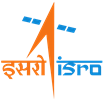Scientific Objective
The ASPEX payload onboard the ADITYA-L1 satellite aims to address crucial scientific questions related to solar wind, interplanetary processes, and their effects on the heliosphere. The primary focus of ASPEX is to investigate the acceleration and energization mechanisms of solar wind particles, encompassing low and high-energy particles associated with both slow and fast components of the solar wind, suprathermal population, shocks from Coronal Mass Ejections (CME) and Corotation Interaction Regions (CIR), as well as solar energetic particles (SEPs). The major science objectives of the ASPEX payload can be summarized as follows:
- Generation Mechanisms of Suprathermal and Energetic Ions:
- Explore the mechanisms responsible for the generation of suprathermal and other energetic ions in the interplanetary space.
- Investigate the association of these ions with solar processes, including their origin and acceleration mechanisms.
- Identification of Shock-Associated Particles:
- Identify and characterize particles associated with interplanetary shocks, specifically those related to CMEs and CIRs.
- Address the processes involved in shock-related particle acceleration.
- Anisotropy in Particle Energy Distribution:
- Determine whether anisotropy exists in the energy distribution of particles along the Parker spiral compared to other directions.
- Investigate the directional variations in the energy distribution of solar wind particles.
- He++/H+ Number Density Ratio:
- Examine variations in the He++/H+ number density ratio during different solar events, such as flares, CMEs, and CIRs.
- Understand the physical mechanisms responsible for changes in the He++/H+ number density ratio.
- Impact on Near-Earth Space Weather:
- Evaluate the importance of the observed processes in terms of their impact on near-Earth space weather.
- Investigate the potential correlations between solar events and their effects on the space environment near Earth.
The instrumentation of ASPEX, including SWIS (Solar Wind Ion Spectrometer) and STEPS (Solar Wind Electrons, Protons, and Alpha Particles Sensor), is tailored to address these issues comprehensively. SWIS, capable of measuring solar wind particles in a broad energy range, will provide crucial data on species differentiation and total flux. STEPS, designed to measure particle flux in a higher energy range, will contribute valuable information on particles' directional distribution. The combination of these instruments positions ASPEX as a powerful tool for investigating the solar wind's intricacies and advancing our understanding of the Sun's influence on the interplanetary environment. Through its systematic observations, ASPEX aims to shed light on key aspects of solar and interplanetary physics, contributing to advancements in space weather forecasting and our broader comprehension of the solar system's dynamics.


